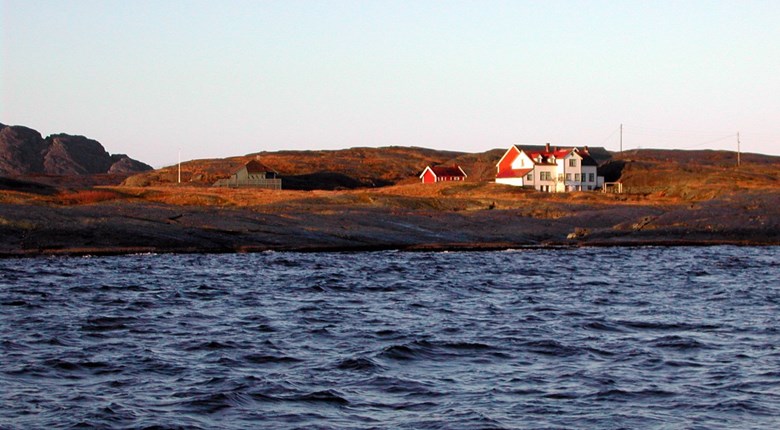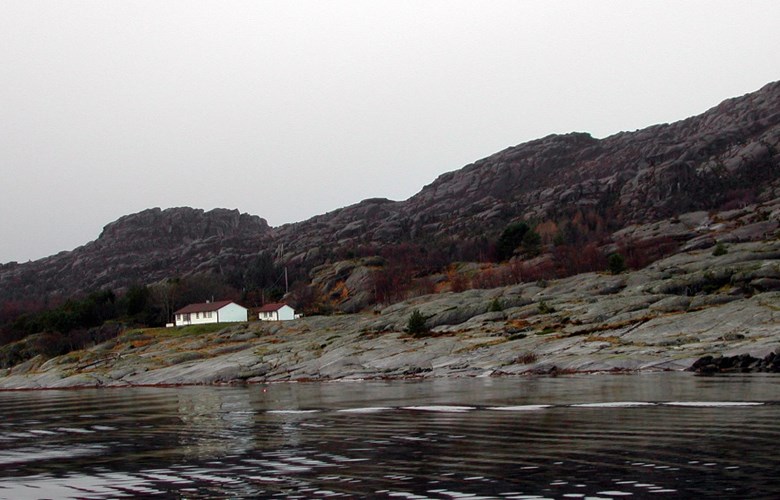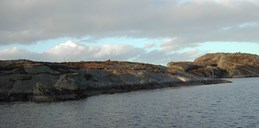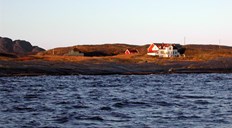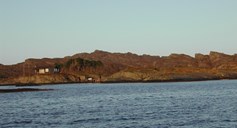The same sloops year after year
The fish was dried on flat, sunny rocks near the sea. Every year sloops arrived at places such as Tungodden, Pollen, Litle-Færøyna, and Nordre Kråkeneset. It is uncertain how long this drying industry was in operation at these southern places. At Tungodden, fish was dried at the end of the 19th century. A young boy who worked there at Oddeberga later wrote that 2-3 sloops came there from Tysnes with fish every year. On the rocks at Pollen, from the cove of Pollevika to Strembeneset, fish was dried until 1931. At Nordre Kråkeneset, the same sloop arrived from Hardanger for 8-9 years, a boy who worked at the Kråkenes rocks north-west of Nilsvika recounts. The moss on the rocks was torn, salted, brushed off.
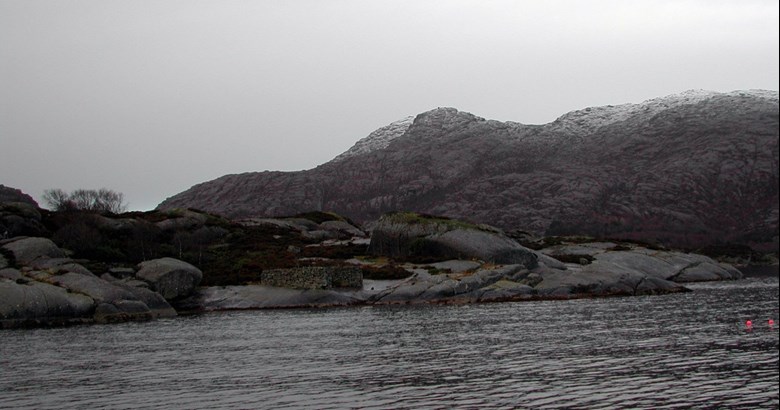
Unloaded into rowboats
When the sloop arrived, she was first piloted to a safe mooring place. People in rowboats came alongside. Women, children of 11-12, and men participated, often in teams. The men lifted the fish up from the hold and onto the deck. From there it was taken down into the boat. And counting was required, because a certain sum was paid for each one hundred. When they had manoeuvred the boat up to the washing place near the drying rocks, they threw the fish on the beach for it to become soft. At Tungodden the children saw to it that the fish was not pulled too far out by the tide. Only when the fish was wet, could it be washed spotlessly clean.
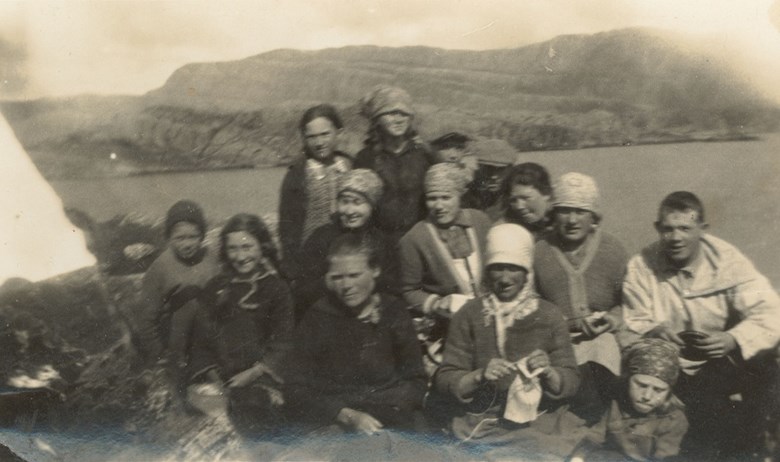
With woollen gloves and up to their knees in the water
As soon as the morning dew had dried from the rock, it was time to start working. When the weather was good, they turned the fish before mid-day.
Long hours
In the evening, new layers of fish had to be made. When the fish became drier and stiffer, it was tied together two and two. After some time, it was stacked. The children carried it to the right place. Elderly women did the best job making round stacks with the fish. When adults could no longer reach to the top, a cover of bark was put on top, in large sheets, and on top of this lots of stones. The days were spent making layers, turning, and the evenings stacking. People rowed long distances in the mornings and evenings, most of them had to struggle across weather-exposed waters.
Serious remuneration
When the vessel was loaded, they went one by one to the skipper's cabin and were paid. The women were paid NOK 0.80 per day, the men a little more. Later the pay was raised to NOK 1.20 if they did good work. The children received NOK 0.40 to NOK 0.60, and NOK 0.80 from age 14 on. They brought their own food.
The same sloops year after yearThe fish was dried on flat, sunny rocks near the sea. Every year sloops arrived at places such as Tungodden, Pollen, Litle-Færøyna, and Nordre Kråkeneset. It is uncertain how long this drying industry was in operation at these southern places. At Tungodden, fish was dried at the end of the 19th century. A young boy who worked there at Oddeberga later wrote that 2-3 sloops came there from Tysnes with fish every year. On the rocks at Pollen, from the cove of Pollevika to Strembeneset, fish was dried until 1931. At Nordre Kråkeneset, the same sloop arrived from Hardanger for 8-9 years, a boy who worked at the Kråkenes rocks north-west of Nilsvika recounts. The moss on the rocks was torn, salted, brushed off.Unloaded into rowboatsWhen the sloop arrived, she was first piloted to a safe mooring place. People in rowboats came alongside. Women, children of 11-12, and men participated, often in teams. The men lifted the fish up from the hold and onto the deck. From there it was taken down into the boat. And counting was required, because a certain sum was paid for each one hundred. When they had manoeuvred the boat up to the washing place near the drying rocks, they threw the fish on the beach for it to become soft. At Tungodden the children saw to it that the fish was not pulled too far out by the tide. Only when the fish was wet, could it be washed spotlessly clean.With woollen gloves and up to their knees in the waterAs soon as the morning dew had dried from the rock, it was time to start working. When the weather was good, they turned the fish before mid-day.Long hoursIn the evening, new layers of fish had to be made. When the fish became drier and stiffer, it was tied together two and two. After some time, it was stacked. The children carried it to the right place. Elderly women did the best job making round stacks with the fish. When adults could no longer reach to the top, a cover of bark was put on top, in large sheets, and on top of this lots of stones. The days were spent making layers, turning, and the evenings stacking. People rowed long distances in the mornings and evenings, most of them had to struggle across weather-exposed waters.Serious remunerationWhen the vessel was loaded, they went one by one to the skipper's cabin and were paid. The women were paid NOK 0.80 per day, the men a little more. Later the pay was raised to NOK 1.20 if they did good work. The children received NOK 0.40 to NOK 0.60, and NOK 0.80 from age 14 on. They brought their own food.
